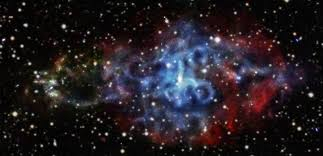The supernova now known as SN 1181 was first observed between August 4 and August 6 in 1181! One of less than 10 supernovae in the Milky Way that was observable with the naked eye in recorded history, finding its remnant hasn’t been easy. A.S.Ganesh takes a look at SN 1181 and the mystery behind it….
A powerful and luminous explosion of a star is referred to as a supernova. In the Milky Way, there have been less than 10 instances in recorded history when a supernova has been observed with the naked eye One of those instances took place in 1181.
Between August 4 and August 6 in 1181, observers in China and Japan were able to stare up at the sky and see what they believed was an unusual bright star in the area that we now describe as the constellation Cassiopeia. They called it a “guest star as it appeared briefly for a visit in one area of the sky and then went away again.
The visitor, in fact, was visible in the night sky for over six months-185 days by popular accounts. We now know that these observers had witnessed a supernova, an event now referred to as SN 1181.
Numerous accounts
Numerous accounts of this supernova have been found in Japanese and Chinese scriptures While a diary entry by a member of the Japanese imperial court in September 1811 calls it “a sign of abnormality.” another saw it as an “occasion for making auspicious offerings for a good harvest”
A Japanese history from the mid-1200s mentions that “A guest star was seen in the northeast. Among the Chinese. the 1345 History of the Song Dynasty states that “A guest star (ko hsing) appeared in Kuei hsiu and invading Chuan-she until the day keui-yu of the first month of the following year [Feb. 6, 1182], altogether 185 days: only then was it extinguished.”
Cosmic jigsaw puzzle
These and the various other accounts that mention this astronomical event serve as pieces of a jigsaw puzzle on a cosmic scale for today’s astronomers. This is because astronomers are tasked with the challenge of matching such historical accounts to real nebulae – the expanding cloud of gas left behind by a supernova.
For centuries, the remnant of SN 1181 remained a mystery. But over the last 50 years or so, candidates have been proposed that fit this particular puzzle.
The powerful tools and instruments at the disposal of modern astronomers were used in conjunction with the historical accounts to arrive at these results.
In 1971, 3C 58-a nebula hosting a pulsar, a type of rapidly rotating neutron star formed from the wreckage of a supernova-was proposed as the remnant of SN 1181. For more than five decades, astronomers have gathered new data and evidence, and posed more questions, but haven’t been able to prove beyond doubt that it is the remnant of the supernova observed in China and Japan in 1181.
Too old to be right?
3C 58’s candidacy has remained in question owing to a number of reasons. Observations in the past few decades estimate it to be more like 2,500 years old, as opposed to the 842-year age of SN 1181.. Additionally, 3C 58 was also found to be too static in the sky and way cooler to be linked to an event that took place in 1181.
In the last few years, another nebula called Pa 30 has emerged as a much stronger contender. Discovered in 2013 by amateur astronomer Dana Patchik while he was searching archival data from NASA’s Wide Infrared Survey Satellite (WISE), Pa 30 lies 7.500 light-years away in Cassiopeia
An interesting object
In the decade since its discovery. multiple observatories have studied it further and it has proved to be an interesting object. While a Russian team proposed that it was the remnant of a double-white dwarf Type lax supernova when revealing their results in Nature in 2019, a team from Hong Kong added further insights when publishing their results in 2021 in The Astrophysical Journal Letters.
Pa 30’s age, as estimated by the Hong Kong team, was a much better fit for SN 1181. Further research has helped narrow down the age of Pa 30 to 844 years, plus or minus 55 years, which is nearly an exact match to the age of SN 1181. This means that Pa 30 could well be the remains of the star that the Chinese and Japanese saw in 1181 and the answer to a mystery that has remained for over eight centuries.
Picture Credit: Google





